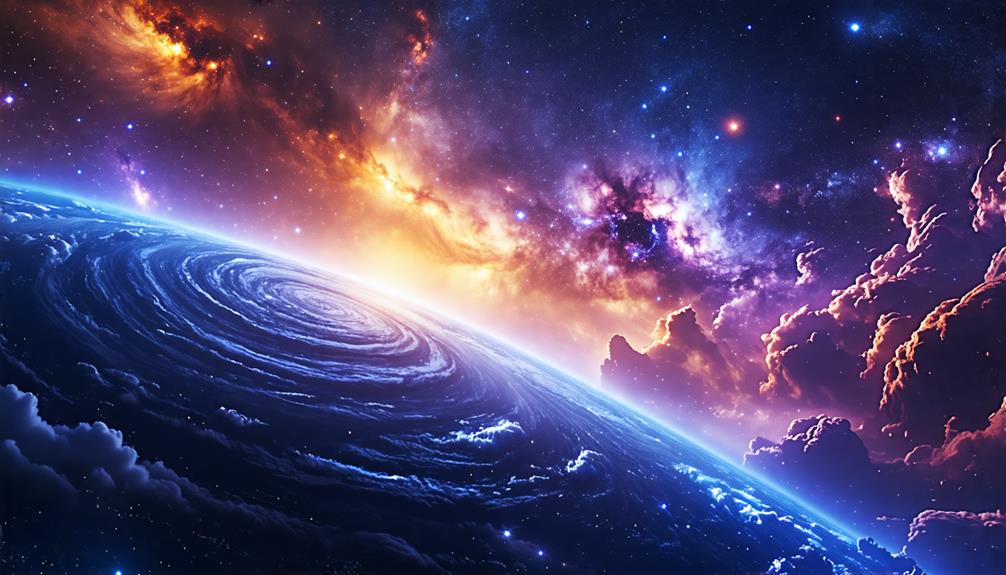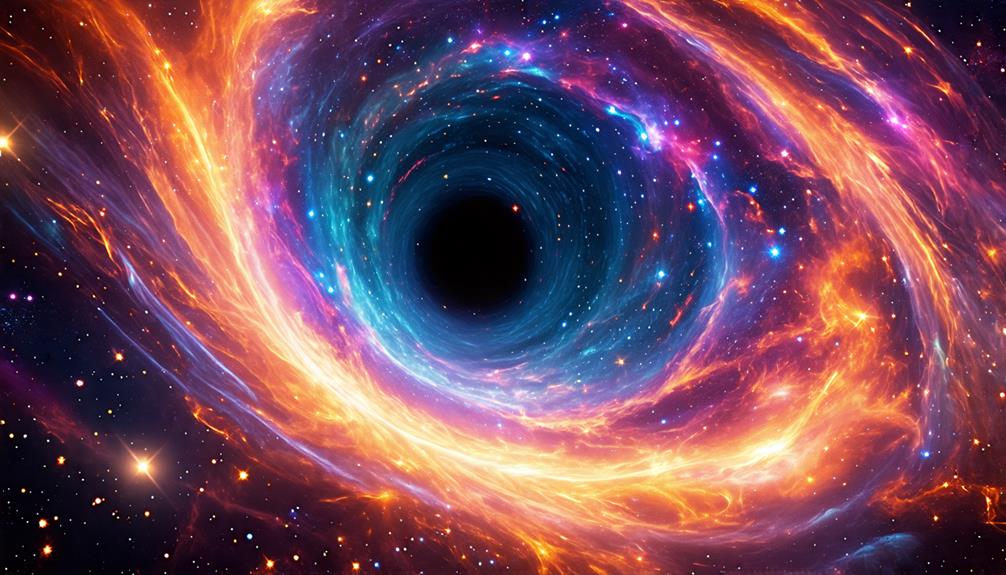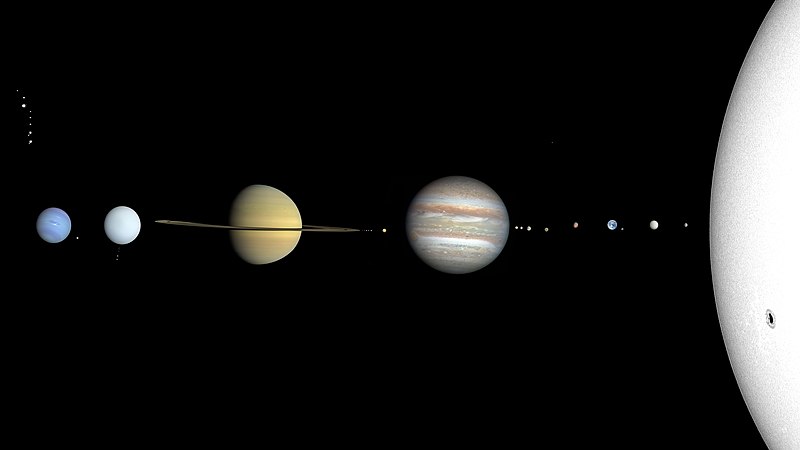What Are White Holes? The Theoretical Opposites of Black Holes
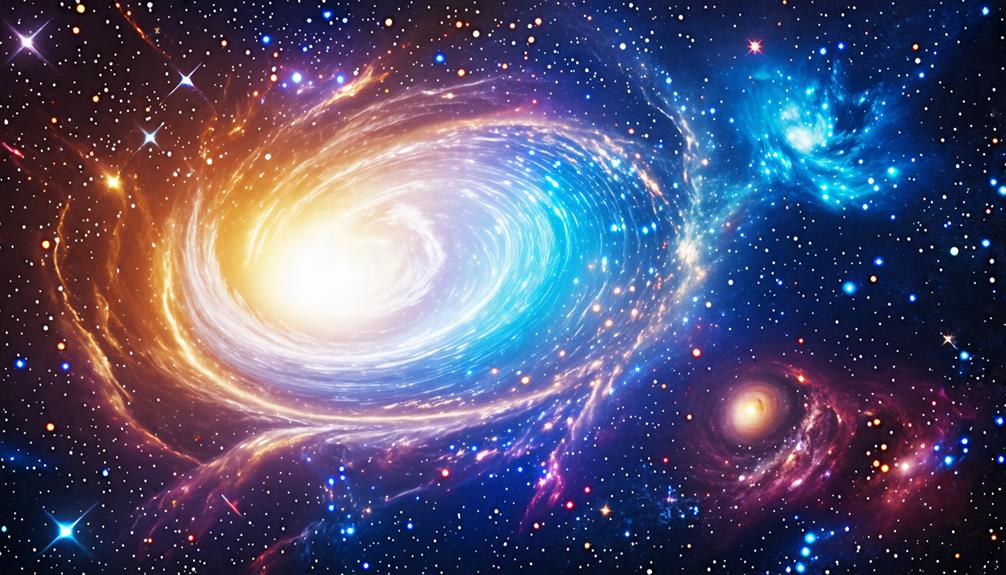
While black holes consume everything that comes near them, white holes are theorized to do the exact opposite—they expel matter and energy. Rooted in the complexities of Einstein's field equations, these enigmatic entities challenge our understanding of the universe. Despite their theoretical foundation, no one has observed a white hole. What does this mean for our comprehension of spacetime and the cosmos? The implications could be profound, warranting further investigation into how these concepts interact with established theories.
Definition and Characteristics
White holes are theoretical cosmic entities that expel matter and energy, acting as the inverse of black holes, which trap them. According to general relativity, these intriguing constructs emerge as time-reversed solutions to Einstein's field equations. While black holes feature an event horizon—a point of no return—white holes possess an event horizon that serves as a boundary for expelling matter, rather than absorbing it.
White holes can be thought of as isolated cosmic entities, unaffected by prior events and fundamentally different from black holes. They theoretically release matter and energy into the universe, adding a unique dynamic to the fabric of spacetime. However, it is important to note that there is currently no observational evidence to support the existence of white holes. This lack of empirical data keeps them within the realm of theoretical physics, sparking interest and debate among physicists. As you explore the mysteries of the universe, white holes remain a captivating concept, encouraging you to ponder their implications for our understanding of cosmic phenomena.
Theoretical Background and Foundations
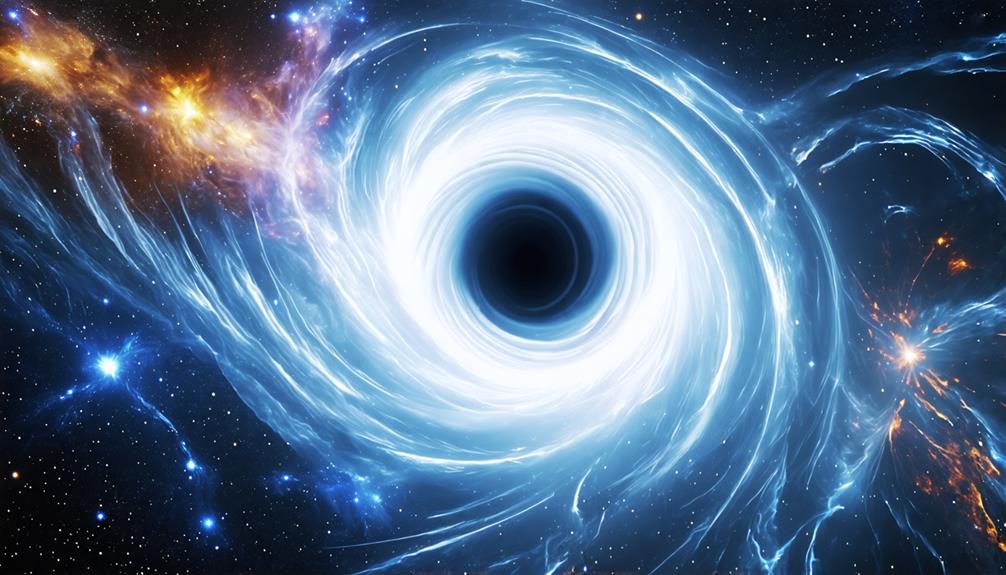
The theoretical foundations of white holes originate from the complex mathematics of general relativity, where they appear as time-reversed counterparts to black holes. According to Einstein's theory, these phenomena are connected through time-reversal symmetry, implying that while black holes absorb matter and energy, white holes could theoretically expel them.
Physicists such as Robert Oppenheimer and Hartland Snyder first explored this concept in the 1930s, laying the groundwork for contemporary understanding. Researchers Igor Novikov and Nikolai Kardashev later suggested that white holes might represent the creation of matter and energy, contrasting with the gravitational collapse seen in black holes.
Additionally, theoretical models propose that white holes could be linked to wormholes, potentially serving as exit points for matter that has entered black holes, though these ideas remain speculative. The potential connection between white holes and the Big Bang underscores their significance in cosmological theories, hinting at their broader role in the lifecycle of black holes and the evolution of the universe. This relationship integrates concepts from quantum mechanics with those of general relativity, highlighting the interdisciplinary nature of this field.
Relationship With Black Holes
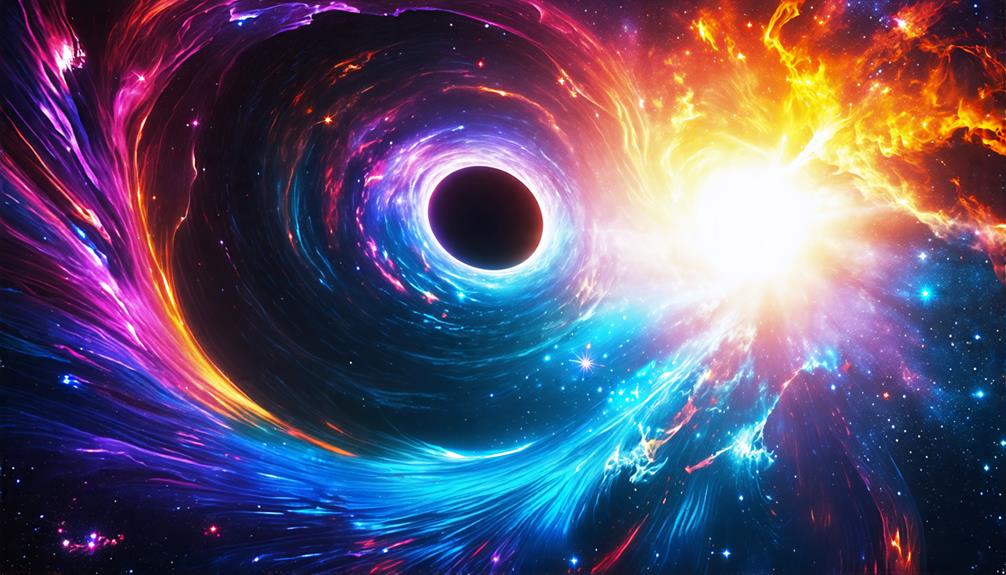
White holes are theorized to be the time-reversed counterparts of black holes, suggesting a symmetric relationship. While black holes attract and absorb matter, white holes are thought to expel it, creating a dynamic interplay between the two. Some theories even speculate that the transformation of black holes into white holes could be part of a cosmic lifecycle, adding another layer of complexity to our understanding of these phenomena.
Time-Reversal Symmetry
Exploring time-reversal symmetry reveals a fascinating relationship between black holes and their theoretical counterparts, white holes, as they embody opposing traits within the structure of spacetime. In general relativity, this symmetry suggests that while black holes exert a strong gravitational pull, white holes possess a repulsive nature. Their connection is mathematically illustrated through the Schwarzschild solution, which encompasses both regions.
Here are some key points to reflect on:
- Thermodynamic Opposites: A black hole in thermal equilibrium corresponds to a white hole in the same state, highlighting their opposing behaviors.
- Event Horizon Dynamics: Particles falling into a black hole experience an infinite time dilation before reaching the event horizon, whereas particles from white holes appear to emerge instantaneously.
- Lifecycle Shifts: Some theories propose that under specific conditions, black holes might transition into white holes, altering our understanding of their lifecycle.
- Spacetime Fabric: Both black and white holes play essential roles in the fabric of spacetime, demonstrating the intricate balance of forces in the universe.
In essence, time-reversal symmetry emphasizes how these cosmic phenomena counterbalance each other, inviting us to rethink our understanding of gravity and the universe.
Black Hole Interiors
The interiors of black holes represent a mysterious domain where gravity compresses matter to a singularity, presenting profound questions about their nature and consequences. Once matter crosses the event horizon—the boundary marking the point of no return—gravitational forces become so intense that nothing, not even light, can escape. The prevailing theories suggest that all matter is ultimately crushed to a singularity at the core of a black hole.
Interestingly, some theoretical models propose that black hole interiors could act as gateways to other regions of spacetime, potentially connecting to white holes via wormholes. This raises intriguing possibilities for information preservation. Physicists speculate that the information consumed by black holes might re-emerge in white holes, challenging our understanding of thermodynamics.
The relationship between black holes and white holes hints at a reciprocal dynamic in the lifecycle of stars. As one star collapses into a black hole, it may eventually give rise to a white hole, suggesting a continuous cycle within the universe. Exploring these concepts pushes the boundaries of our knowledge and invites deeper inquiry into the fabric of spacetime.
Spacetime Structure and Implications
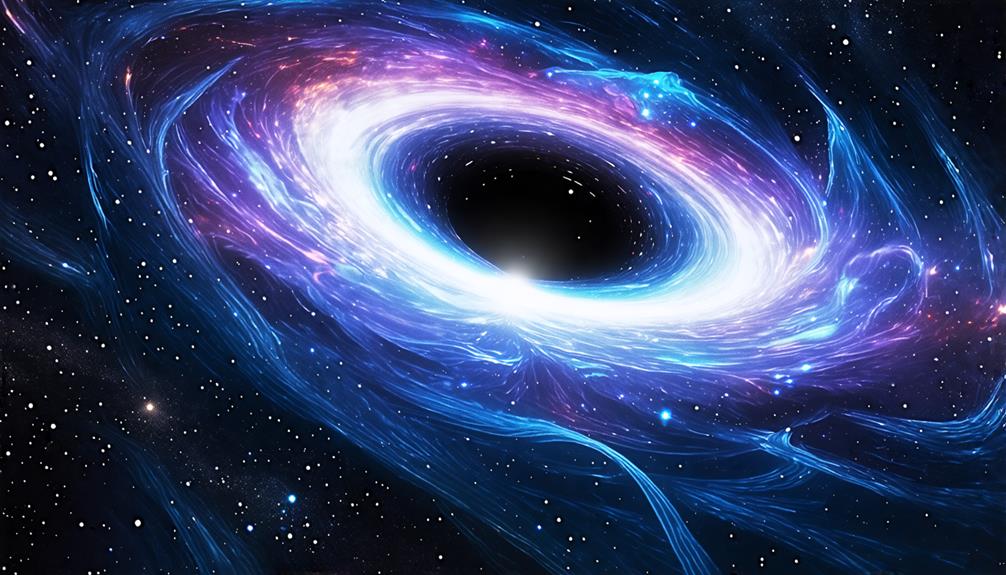
When examining the spacetime structure of white holes, spacetime diagrams highlight their relationship to black holes. These models provoke intriguing questions about singularities and challenge our understanding of entropy. Considering the implications of these cosmic phenomena could lead to a redefinition of fundamental concepts in physics.
Spacetime Diagrams and Models
Spacetime diagrams visually map the distinct regions of black holes and white holes, revealing their intricate structures and the dynamics of particle movement within a maximally extended spacetime framework. These diagrams illustrate how gravitational fields influence particle trajectories and highlight the contrasting behaviors of matter near these cosmic phenomena.
Here are four key aspects of spacetime diagrams and models:
- Kruskal-Szekeres Coordinates: These coordinates provide a comprehensive view of particle paths as they approach black holes and emerge from white holes, illustrating the continuous flow of spacetime.
- Einstein-Rosen Bridge: This theoretical construct connects black holes and white holes, exemplifying their structural interactions, although traversal through the event horizon remains impossible.
- Quantum Gravity Insights: By studying spacetime structures, researchers can explore potential connections between black holes, white holes, and the fundamental laws of physics, offering deeper insights into quantum gravity.
- Entropy and Thermodynamics: The concept of white holes challenges traditional views on entropy and thermodynamics, potentially reshaping our understanding of the universe's origins and evolution.
Singularities and Entropy Challenges
Investigating the implications of singularities and entropy challenges reveals how white holes might disrupt our understanding of cosmic processes and fundamental physical laws. Unlike black holes, where energy and matter are compressed into an enigmatic singularity, white holes propose a scenario where organized matter is expelled, thereby challenging the second law of thermodynamics. This potential decrease in entropy raises significant questions about the interactions of these entities within the spacetime continuum.
The gravitational field surrounding a white hole could suggest a cyclic nature of the universe, where the collapse of a black hole leads to a white hole explosion, creating new pathways for cosmic evolution. Delving deeper into this relationship, one might find that the singularity within black holes could be resolved through the ejection of matter from white holes, proposing a fascinating interplay between the two.
Moreover, considering quantum effects in these scenarios could provide groundbreaking insights into the nature of spacetime and its implications for thermodynamics. By examining these principles in conjunction with white holes, one could unveil new perspectives on the fundamental laws of the universe and its ongoing evolution.
Indicators for Discovery
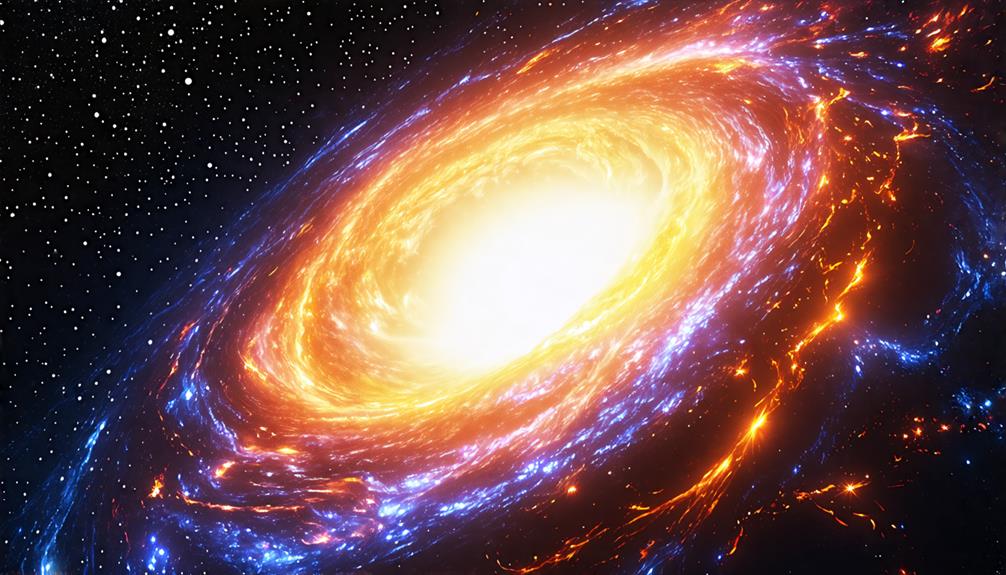
Astronomers are actively searching for energetic ejections of matter that could indicate white hole activity, as these theoretical objects are thought to expel rather than absorb matter, unlike black holes. By focusing on unique energy signatures and unusual cosmic phenomena, researchers aim to identify distinct markers that point to white holes.
Here are four potential indicators for detection:
- Gamma-ray bursts: These intense bursts of energy might suggest the presence of white holes due to their association with unusual emissions.
- Matter ejection patterns: Observing matter being expelled in ways that differ from typical black hole activity could indicate white hole influence.
- Theoretical connections: White holes might serve as exits for matter falling into black holes, potentially observable through specific cosmic events.
- Innovative observational techniques: Developing new astrophysical methods could help identify and analyze distinct markers that align with white hole predictions.
The search for white holes continues, emphasizing the need for creative approaches, as current observational techniques have yet to provide definitive evidence for these intriguing phenomena.
Cultural Representation
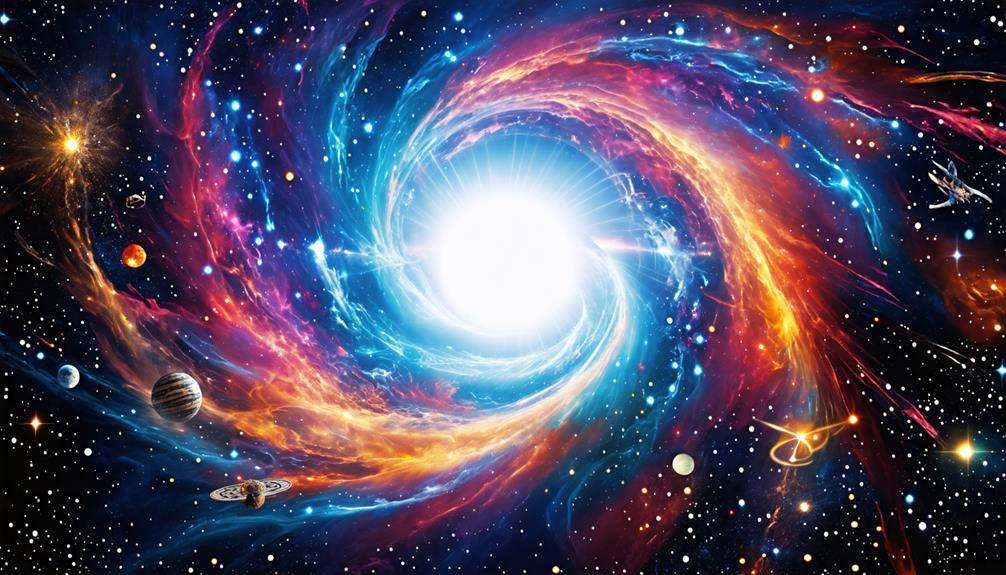
The search for white holes has not only captured the interest of scientists but also sparked imaginative portrayals in popular culture, where they embody the mysteries of the universe. White holes appear in various sci-fi narratives like the British sitcom 'Red Dwarf,' which humorously explores these cosmic phenomena. In 'Yu-Gi-Oh! GX,' they are woven into a complex mythology involving alternate dimensions and cosmic entities, showcasing their enigmatic qualities.
Notable physicists, including Stephen Hawking, have discussed these theoretical constructs in their writings, further igniting public fascination. Cultural representations of white holes often highlight their mysterious nature, setting them apart from black holes and fueling curiosity about time travel and the fabric of the universe.
These portrayals invite audiences to ponder the possibilities of existence beyond our understanding, challenging the boundaries of science and imagination. By integrating white holes into popular culture, creators tap into humanity's inherent desire to explore the unknown, reflecting both scientific discourse and our collective fascination with the cosmos. Whether through humor or dramatic storytelling, white holes continue to inspire and intrigue.
Resources for Further Exploration
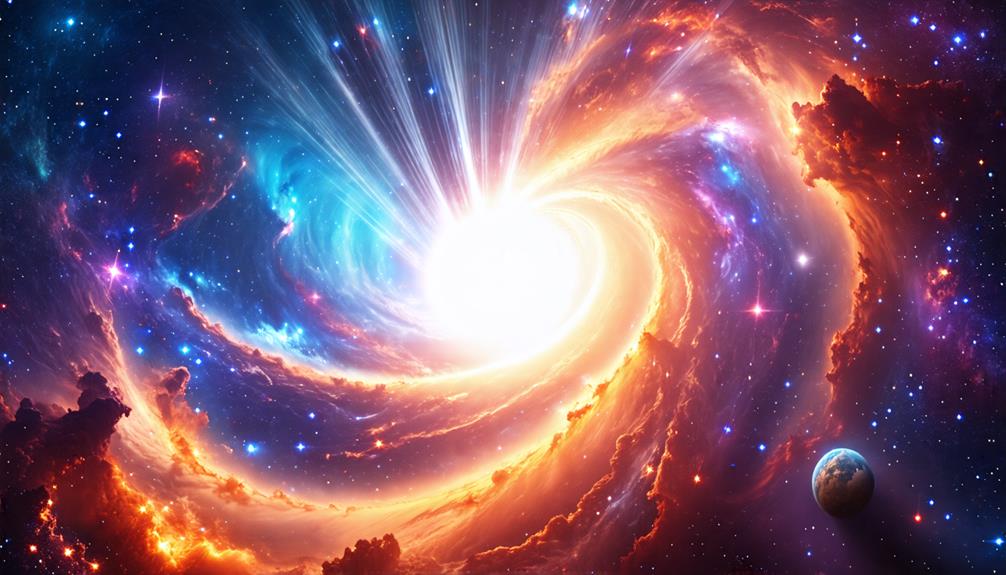
For those interested in the intriguing concept of white holes, there are numerous resources available that explore their theoretical underpinnings and implications in astrophysics. These materials also delve into the relationship between white holes and black holes, as well as concepts like Einstein's General Theory of Relativity and quantum loop gravity.
Here are some recommended resources for further exploration:
- Universe Today: Fraser Cain's articles simplify complex theories, making them accessible while discussing the nature of black holes and white holes within the context of spacetime.
- PBS Space Time: This video series provides in-depth discussions on the gravitational fields surrounding these cosmic phenomena and their connections to Hawking radiation and event horizons.
- Nautilus: Articles here explore the parallels between white holes and the Big Bang, illuminating their roles in cosmic evolution.
- Academic Research Papers: Look for studies focusing on the transition from black holes to white holes, particularly those examining Hawking radiation and the potential for a cosmological "Big Bounce."
These resources will enhance your understanding of the intricate interplay between black holes and white holes in our universe.
Conclusion
In summary, white holes captivate our imagination as the theoretical counterparts to black holes. While they remain unobserved and are primarily rooted in the realm of theoretical physics, their implications challenge our understanding of the universe. Exploring these cosmic phenomena further reveals intriguing connections to black holes, spacetime, and even the Big Bang. The pursuit of knowledge about white holes not only enhances our comprehension of the cosmos but also ignites curiosity and wonder about the mysteries that lie beyond our current understanding.

